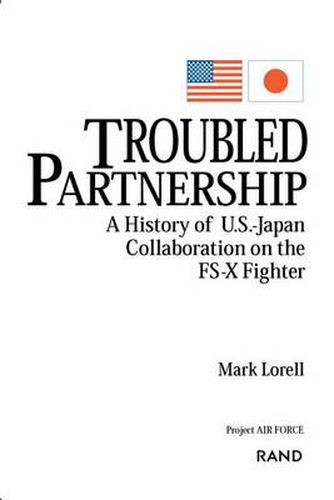Readings Newsletter
Become a Readings Member to make your shopping experience even easier.
Sign in or sign up for free!
You’re not far away from qualifying for FREE standard shipping within Australia
You’ve qualified for FREE standard shipping within Australia
The cart is loading…






The United States has generally tried to discourage its allies from developing their own major weapons systems, to promote equipment standardization with U.S. forces, and tie allied security policies more firmly to U.S. interests. Japan’s FS-X fighter is perhaps the most prominent example of this policy. Japan had originally intended to design and build an indigenous fighter; the Pentagon urged Japan to buy an existing U.S. fighter. After difficult negotiations, the two sides eventually agreed to lightly modify the U.S. F-16 jointly to meet Japan’s special needs. But as a result of political controversies over technology transfer and trade, the U.S. side focused increasingly on the economic aspects of the program. Under cover of these controversies, the Japanese have been able to move the FS-X design and technology applications ever farther away from the F-16 toward a much more nearly indigenous creation. In the end, the FS-X program has failed to meet many of the original U.S. expectations, and Japan has reaped an unexpected reward–experience in developing a world-class fighter aircraft. This book summarizes and assesses the program.
$9.00 standard shipping within Australia
FREE standard shipping within Australia for orders over $100.00
Express & International shipping calculated at checkout
The United States has generally tried to discourage its allies from developing their own major weapons systems, to promote equipment standardization with U.S. forces, and tie allied security policies more firmly to U.S. interests. Japan’s FS-X fighter is perhaps the most prominent example of this policy. Japan had originally intended to design and build an indigenous fighter; the Pentagon urged Japan to buy an existing U.S. fighter. After difficult negotiations, the two sides eventually agreed to lightly modify the U.S. F-16 jointly to meet Japan’s special needs. But as a result of political controversies over technology transfer and trade, the U.S. side focused increasingly on the economic aspects of the program. Under cover of these controversies, the Japanese have been able to move the FS-X design and technology applications ever farther away from the F-16 toward a much more nearly indigenous creation. In the end, the FS-X program has failed to meet many of the original U.S. expectations, and Japan has reaped an unexpected reward–experience in developing a world-class fighter aircraft. This book summarizes and assesses the program.